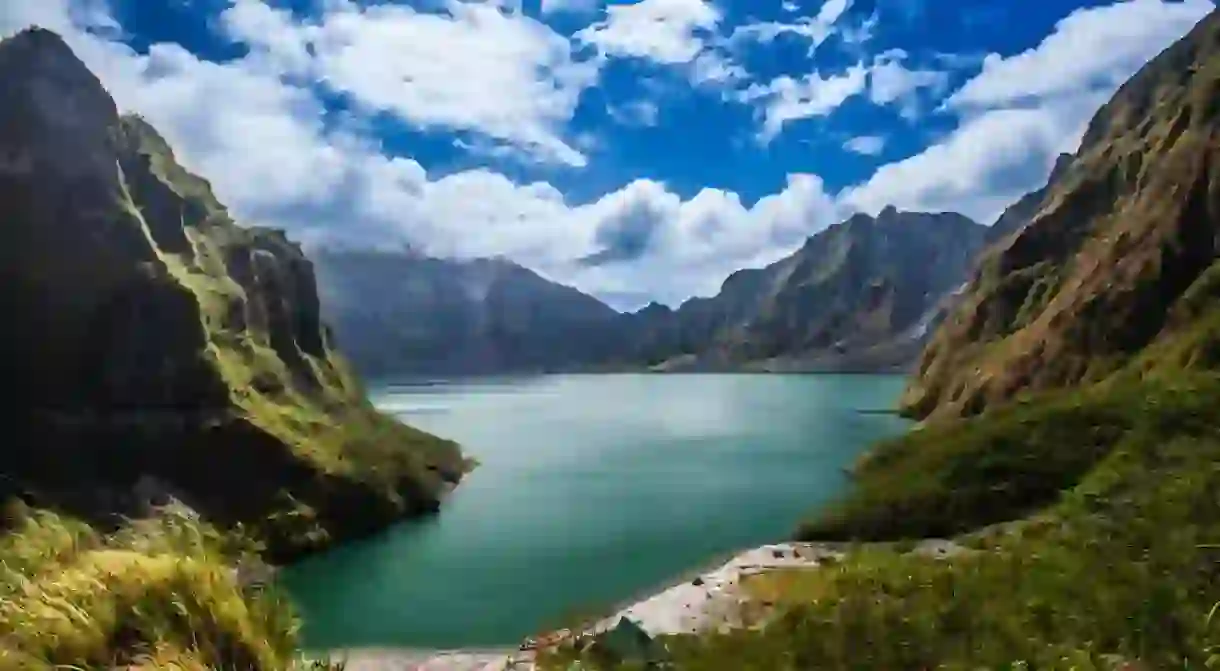The 10 Best Ecotourism Experiences in Luzon, Philippines

As the biggest of the Philippines’ main island groups, Luzon is home to a number of ecotourism options that let you enjoy nature and help maintain its beauty at the same time. Check out where you can have the best ecotourism experiences in Luzon.
Rich in natural resources, the Philippines has been globally-admired for its pristine nature and diverse flora and fauna. Due to climate change and illegal man-made activities, some natural areas and species are under threat. In order to protect them, conservation efforts have been set up to promote sustainable travel among tourists. Here are 10 of the best.
Mount Pinatubo

On June 12, 1991, the world’s second largest volcanic eruption in that century took place in Zambales, Philippines. Mount Pinatubo’s eruption had resulted to millions of tons of sulfur dioxide in the air, covering the entire Luzon and reaching neighboring Asian countries. These days, it holds wondrous beauty featuring a blue-green lake on a gray-brown crater. After its tragic eruption, tourists are now visiting the area to experience Mount Pinatubo by trekking the crater lake, which involves a 4×4 ride on a lahar field. After a 2.5-hour trek, visitors are treated to a majestic view of the Pinatubo crater’s lake water.
Hundred Islands National Park
Park, Natural Feature

From the name itself, over a hundred mushroom-like islands scattered across the southwest part of Lingayen Gulf comprise the Hundred Islands National Park. Although there are 123 unique islands, only three are open to tourists – the Governor’s Island, Quezon Island, and Children’s Island. The Governor’s Island is the biggest among the three, and has a viewing deck at the top that requires you to go through a tough climb. Because of its camping facilities and shallow shores (ideal for snorkeling), Quezon Island has been dubbed as family-friendly among tourists. Meanwhile, the Children’s Island also has shallow waters and cottages, which are perfect for family picnics. What makes the Hundred Islands National Park a favorite ecotourism destination is its close proximity to the country’s capital city, Manila.
Candaba Swamp and Wild Duck Sanctuary

Located in Candaba, Pampanga, the Candaba Swamp acts as a catch basin whenever water overflows from Maasim, San Miguel, Garlang, Bulu, and Penaranda rivers. Encompassing an area of about 32,000 hectares, the Candaba Swamp has freshwater ponds, swamps, and marshes visited by thousands of migratory birds every October to April (during the wet season). That’s because these migratory birds either spend their winter season in the country or just pass through before heading to their destinations. In 1982, the largest concentration of birds happened in the area with 100,000 migratory birds observed in just a day. If you’d like to catch sight of these birds, it’s best to see them at either sunrise or sunset. Some of the popular species you can see here are the Shrenck’s Bittern, Purple Swamp Hen, and Black-Crowned Heron.
La Mesa Eco Park
Park

The La Mesa Eco Park is a 33-hectare ecological park that provides outdoor recreation, forest experience, and a breath of fresh air for Metro Manila residents. Amidst the hustle and bustle of the city, this public park was established to save the La Mesa Watershed, which is a source of drinking water in the country’s capital. After its reopening in 2004, this tree-lined paradise has become a popular tourist spot, especially for adventure seekers. Things to do here include hiking, boating, and fishing, among others. Apart from generating revenue, it also aims to promote environmental awareness.
Las Piñas-Parañaque Critical Habitat and Ecotourism Area

The Las Piñas-Parañaque Critical Habitat and Ecotourism Area or LPPCHEA is a nature reserve located in the South of Manila. Comprising of Freedom Island and Long Island, the LPPCHEA is the country’s first critical habitat teeming with mangrove forests, lagoons, and salt marshes. As visitors trek in the area, they are introduced to a diverse variety of ecosystems. The main attraction is the wild birds – 82 species of wild birds (41 species are migratory birds) can be found within the area. Tourists can spot these birds nesting, feeding, or flying in the open. During migration season, this area becomes a feeding and resting spot for migratory birds heading to warmer regions.
Masungi Georeserve
Hiking Trail

Pawikan Conservation Center

Located in Morong, Bataan and about a three-hour drive from Manila is the humble sanctuary called Pawikan Conservation Center. Due to harsh fishing conditions, illegal trade, and natural predation, the sea turtles (pawikan) have become endangered. Thus, the government’s Department of Environment and Natural Resources (DENR) put up the conservation center. Headed by the Bantay Pawikan Incorporated, the organization’s members roam and patrol along the beach’s six-kilometer stretch to protect the hatchlings of the sea turtles from its predators and the fishermen around. These eggs would then be placed in the center’s hatchery until its hatching is completed after 51 days. Both local and foreign tourists head over to the area to volunteer with patrolling, join the center’s “Adopt a Turtle” program or attend the annual Pawikan Festival.
Tubbataha Reefs Natural Park
Natural Feature, Park

Puerto Princesa Subterranean River National Park
Natural Feature, Park

La Union Botanical and Zoological Garden
https://www.instagram.com/p/-HSvUlFfcD/?taken-at=297201231
In the City of San Fernando, La Union, you’ll find this garden on a hilly 20-hectare land. Serving as a sanctuary for various wild animals and displaying theme gardens with their scientific names, it invites tourists to indulge themselves in the beauty of nature. Here you’ll find different themed gardens such as the Japanese Garden, Shade Garden, and Evergreen Garden. They also have a Medicinal Garden where they cultivate dozens of herbs and medicinal plants. What makes this destination a fascinating one is the existence of the harmonious relationship between the plants and animal species present in the garden.













